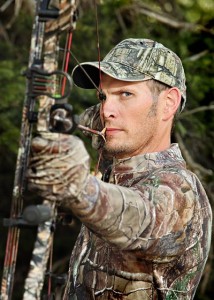Turkey vs. Elk
When I first started hunting turkeys, someone said they were very similar to elk. This sounded absurd considering the two animals are practically complete opposites. However, nine years later I have to admit that turkey behavior during the spring rut is very similar to elk behavior in the fall.
What this means is that any hunter transitioning from turkey to elk, or elk to turkey, will already have many of the necessary skills and knowledge to hunt the other creature.
In this article we’ll explore both the similarities and differences between the two animals.
Turkey and Elk Similarities
- Both animals have very loud calls (gobbles or bugles) that are used frequently to locate and communicate with other members of the herd. These calls are very useful for hunters trying to locate and call in animals. Also, both animals call more frequently in the morning and evening.
- In both cases, the flock or herd is led by a senior female, also known as a lead cow or hen. The bull or tom almost always pulls up the rear of the herd. This protects the tom or bull from threats and makes them more difficult to hunt.
- Both animals leave lots of sign and make lots of noise. Wherever turkeys or elk are living, they leave lots of tracks and droppings. This is key to locating the animals. Also, the both sexes of both animals make lots of noise or “flock talk:” Cows mew and chirp; hens yelp and cluck.
- Both elk and turkeys are difficult to drop with an arrow. In other words, your arrow must be perfectly placed in the vitals. Although turkeys are much smaller, they can really take a beating. Even a pass through shot can result in a lost bird if not placed in the 4-inch vital zone or head. As for elk, they are extremely tough. Even a single-lung hit can result in a lost animal.
- Both bulls and toms easily become call shy after just a couple bad experiences with hunters. Both animals are hunted hard out West and they learn fast. A call-shy or over-pressured animal might respond from afar, but they mostly hang up well out of bow range. If the hen or cow that you are trying to imitate isn’t willing to come to them, then the bull or tom will eventually lose interest and leave.
- Both animals use alarm barks or clucks when danger is detected. Turkeys immediately erupt into high-pitched alarm clucks when they see danger. Elk make sharp alarm barks. At this point the herd goes silent and moves off rapidly. In other words, it’s game over!
- Both elk and turkeys go silent during mid-day. Both animals feed heavily in the morning and go through their courting rituals before bedding down. Turkeys remain more day-active than elk—feeding and traveling around—but they are mostly silent. Elk just bed down and mostly sleep during the day. Then, in the last hour or two of light, both animals become loud and animated again.
- Both elk and turkeys are very exciting to hunt. A big bull elk is arguably more exciting, however, when you have a big tom strutting and gobbling into your decoy, it’s sure to get you riled up! Some elk hunters scoff at the idea that turkeys are exciting, but for the dedicated turkey hunter, it’s just as fun as elk hunting.
Now that we’ve examined the various similarities between elk and turkeys, let’s take a look at the major differences.
Turkey and Elk Differences
- Turkeys have excellent eyesight compared to elk. Elk can’t see colors in the red spectrum, nor can they see fine detail. Instead, they are forced to rely on scent or movement to detect danger. Turkeys on the other hand, being a bird, have extremely good eyesight. They see both color and fine detail. It’s also apparent that turkeys have a much faster frame-rate than mammals, which means they process visual information faster, and therefore see in slow motion. A hunter wearing camouflage and sitting still can easily be picked off at 30 yards by a turkey, where an elk won’t detect the hunter until he’s practically eyeball-to-eyeball.
- As mentioned before, elk rely on scent whereas turkeys don’t seem to use scent detection at all. This means a tom turkey can approach from any direction, but an elk must always be hunted with a favorable wind direction.
- Elk have a much larger kill zone than a turkey. The vital kill zone of an elk is almost the same size as an entire turkey (about 12 inches), whereas a turkey has a kill zone the size of a softball. Turkeys also move around a lot, which means they are much harder to hit with an arrow. Basically an archer needs to take his effective range (the distance where he can hit an 8-inch paper plate with every arrow) and divide it by two in order to be effective on turkeys.
- Elk leave much heavier blood trails and tracks than a turkey. A well-hit turkey can travel very long distances while leaving little to no sign to follow. Turkeys bleed very little and are nearly impossible to track without snow or mud. A poorly hit elk, on the other hand, will usually leave lots of blood and deep hoof tracks. Sure, elk are tough, but you can generally track them for much longer distances.
- There are far fewer turkeys than elk available to hunt. In Utah there are about 85,000 elk, but only 30,000 turkeys. That’s almost a 3-to-1 ratio. Although there is less demand for turkeys, you still might have a harder time locating turkeys.
- Aside from the major differences listed above, here are a few other differences: a) Turkeys sleep during the night; elk sleep during the day, b) Turkeys have a much smaller home range compared to elk, and c) elk rut in the fall while turkeys rut in spring, mostly.
Conclusion
On the surface, turkeys and elk might seem like completely opposite animals. But hunting them can be very similar. Hopefully the above comparisons will help you transition between the two animals. The majestic bull elk are considered by most hunters to be the most exciting animal to pursue out West, but any dedicated turkey hunter will argue that the lowly thanksgiving bird ranks right up there with him.
















